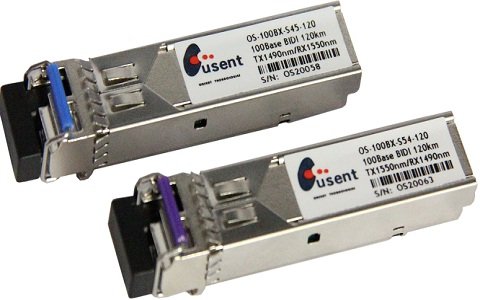In the world of telecommunications and networking, a transceiver plays a crucial role in transmitting and receiving data. The term transceiver is a combination of transmitter and receiver, indicating its dual functionality.
It serves as an interface between different communication devices and enables the transfer of information in various forms, including audio, video, and digital data.
In this article, we will delve into the working principles, different types, and applications of transceivers.
Working of a Transceiver:
At its core, a transceiver is an electronic device that combines the functionalities of both a transmitter and a receiver. It allows bidirectional communication by transmitting data from one end and receiving data at the other end simultaneously. The primary working principle of a transceiver involves the conversion of electrical signals into optical or radio frequency signals for transmission and vice versa for reception.
In optical transceivers, data is transmitted using light pulses through optical fibers. The transmitter section consists of a laser diode that converts electrical signals into optical signals. These optical signals then travel through the fiber optic cable. At the receiving end, a photodiode converts the received optical signals back into electrical signals for further processing.
In radio transceivers, the process is similar, but it involves the use of radio waves instead of light. The transmitter section converts electrical signals into radio frequency signals, which are then transmitted through antennas. The receiver section receives the radio frequency signals using an antenna and converts them back into electrical signals.
Types of Transceivers:
Transceivers come in various types and formats, catering to different communication needs. Here are a few common types of transceivers:
- Optical Transceivers: These transceivers are used in fiber optic communication systems. They support different optical interfaces such as SFP, SFP+, QSFP, and CFP. Optical transceivers are widely used in data centers, telecommunications networks, and long-distance communication applications.
- Radio Transceivers: Radio transceivers operate in the radio frequency spectrum. They are utilized in wireless communication systems, such as Wi-Fi networks, cellular networks, and two-way radios. Radio transceivers can cover a wide range of frequencies, from a few megahertz to several gigahertz.
- Ethernet Transceivers: Ethernet transceivers, also known as media converters, allow the integration of different types of Ethernet networks. They enable the conversion between copper-based Ethernet and fiber optic Ethernet, extending the reach and flexibility of network connections.
Applications of Transceivers:
Transceivers find applications in various domains, including telecommunications, networking, and broadcasting. Some notable applications of transceivers include:
- Data Communication: Transceivers are widely used in data communication networks, such as local area networks (LANs) and wide area networks (WANs). They facilitate the exchange of data between different devices, enabling seamless connectivity and efficient data transfer.
- Wireless Communication: Transceivers play a crucial role in wireless communication systems, such as mobile phones, satellite communication, and wireless internet. They allow the transmission and reception of signals over the air, enabling wireless connectivity and mobile communication.
- Broadcasting: Transceivers are essential components in broadcasting systems, including television and radio broadcasting. They enable the transmission of audio and video signals from broadcasting stations to receivers, ensuring widespread dissemination of information and entertainment.
- Military and Defense: Transceivers have significant applications in military and defense communication systems. They are used for secure and reliable communication between military personnel, radar systems, and unmanned aerial vehicles (UAVs).
Conclusion:
In the world of modern communication, transceivers serve as the backbone of various systems, enabling efficient data transfer and seamless connectivity. With their dual functionality.
